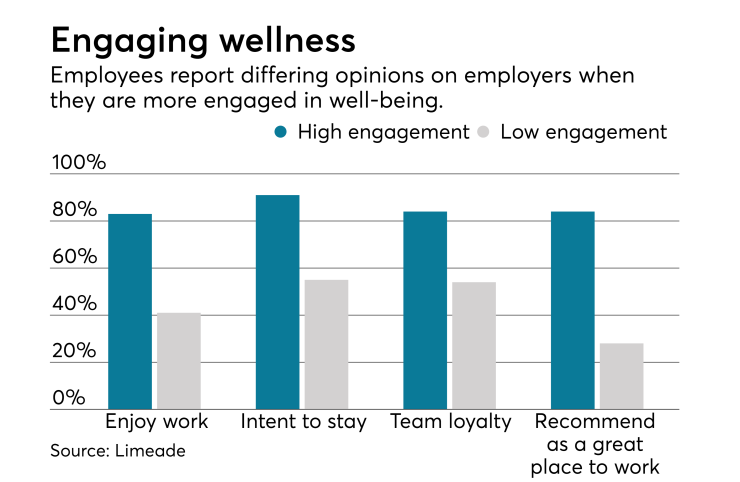This fall, millions of employees are deciding which health plan to select for 2019. They are reviewing and comparing a variety of factors when making this important decision, such as costs, benefits and care provider networks.
Another component that crops up to the surprise of many workers? Wellness programs.
Employers know that a healthy employee can make for a more productive, satisfied employee. And many workers want to improve their health and are often surprised to learn that employers offer wellness programs. That mutual interest is behind the rise of workplace wellness programs.
Wellness programs usually are made available to employees by their companies directly or through health benefit plans. In either case, employees can factor in the value of wellness offerings, such as weight-loss programs, tobacco-cessation programs or health screenings when determining a health plan that best meets their needs.

A recent UnitedHealthcare report, “Employee Wellness Programs Bring Results,” suggests that companies that strengthen their wellness offerings can yield cost-savings and improve employee health over the long-term.
Many companies, like those highlighted in the report, have successfully established a culture of well-being through their wellness programs.
While each company’s wellness program may be strongest when tailored to its employees’ needs, successful programs often include offering meaningful financial incentives, or a mental health focus through offerings like mindfulness classes and relaxation rooms, or a financial well-being component, like estate-planning seminars. And, many employers find offering the services of a wellness coordinator or nurse liaison onsite encourages a culture of health.
The report compared companies with award-winning wellness programs alongside a peer group of similar companies. It found those that make positive changes to their health offerings over the years may reap the rewards of healthier employees and reduced healthcare costs down the road.
For example, these companies experienced 14.2% per-member, per-month lower costs, even with a 7.5% greater claim risk score (based on their employees’ health status), than the peer group, and the employees at the high-performing companies experienced 24% fewer emergency room visits. Also, the report finds that it can take time for employer wellness programs to yield significant benefits.
Strengthening wellness programs strengthens employees
The report revealed that the companies with the most effective programs had several common characteristics that contribute to their plan’s positive results and encourage a culture of health, including enthusiastic involvement by senior leaders, positive encouragement from internal advocates, offering employee incentives and putting in place measurable success barometers.
Also, these companies conduct health surveys and challenges, biometric screenings and financial well-being programs, and they all survey their employees to gather feedback to refine their programs.
The informational benefits meetings that are often part of open enrollment offer companies a good opportunity to collect and analyze employee feedback to further strengthen their wellness offerings. It is also an ideal time for employers who have not yet done so to consider offering a wellness program that supports their employees’ health and may improve their well-being while reducing costs for employees and the company.





